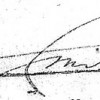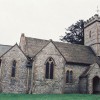The smart resort of Bournemouth is a relatively modern place, unlike the historic ports of Poole and Christchurch either side. Bournemouth was created by the Victorians, much aided by the arrival of the railway, which gave the masses previously undreamed possibilities of travel.
Today, Bournemouth is the largest conurbation in Dorset, with some 163,000 residents, part of the seamless urban belt that runs from Upton in the west to Barton-on-Sea in the east, with a slight break at the River Avon. Until 1974, Bournemouth was part of Hampshire, with the boundary at County Gates, were Westbourne meets Poole. Becoming a unitary authority in 1997, it still stands much apart from Dorset – indeed – some die-hard traditionalists still won’t accept it’s not still in Hampshire!
Sea bathing had become fashionable in the times of King George III at the nearby resort of Weymouth, but Bournemouth – literally where the meandering river Bourne joins the sea – was very much a late developer. Two centuries ago it was a largely empty length of coastline, with sand dunes by the sea and heathland at the rear. Captain Lewis Tregonwell built a summer home in 1811, on open land now occupied by the Royal Exeter Hotel. The Tapps Arms Inn of 1809 was the only other building hereabouts.
Today Bournemouth is one of the best known resorts in England. The strength of Bournemouth has always been the beauty of its seafront and gardens. Early landowners planted lots of pine trees and their distinctive scent is everywhere. Some say it sends them to sleep! The course of the River Bourne from Meyrick Park down into the Upper Gardens, then into the Lower Gardens forms the valley on which the town is centred. Quite steep hills rise either side of the gardens, wide roads in which the ladies will spend hours in the many shops and boutiques. Lots of super restaurants, from classic English to ethnic, line the streets and interleave with the smart shops and arcades. The Borough Council claims the highest number of Rolls Royce owners live in Bournemouth, which they say has more pubs and clubs than Soho.
Let us begin – as all seaside tours should – at Bournemouth Pier. A jetty was built in 1856, but the present iron pier had its beginnings in 1880. Looking inland from the pier head – where boats still call on day excursions to the Isle of Wight and Swanage, the green spine along the twinkling stream is clearly seen. On the right rises the majestic Royal Bath Hotel on the Eastcliff, with the steel box of the Imax cinema placed in front of it, rather like Dr. Who has just left his tardis there! Students of planning should include this architectural abomination in their studies, how could the planners allow it? To the right of centre, seen from the pier head, is the gracefully ageing Pavilion, the 1929 centre of entertainment, including a theatre, ballroom, restaurant and a tea room. To the left, along the Westcliff, is another modern building – the Bournemouth International Centre – which blends in with the hillside. The venue for national political conferences and major exhibitions, it brings much trade to the area.
Out at sea, the bay begins at Durlston Head in the west and ends at Hengistbury Head in the east, famous for its Iron Age forts. Boscombe Pier survives to the east. You may see the ferries and the fast “Condor” catamarans bound for Cherbourg or Guernsey, emerging from the narrow entrance to Poole Harbour in the west, having crossed the chain ferry at Sandbanks.
Walking through Lower Gardens is a special delight in summer, when the riot of colour and scent are at their height. The rectangular bandstand still hosts band concerts. Lots of seats give space to sit and enjoy the peace. The tall buildings of Westover Road dominate the east view, including the Metro Palace Court Hotel – my tip for a fine meal in smart surroundings – but not cheap.
The Square is the meeting point of six roads, today partly pedestrianised, but I well remember the yellow trolleybuses of the 1950s and 1960s, which all converged on this point. Many major stores are at once visible, not least Beales department store in old Christchurch Road – a great Bournemouth institution, with its own restaurant on the top floor. Outside in the road is a clock, a gift from the people of Lucerne in Switzerland, with whom they are twinned.
Here the two faces of the town are most evident. “Shopping Bournemouth,” with its fine shops and restaurants, is really busy all year round. At the other end of the gardens, the beach and the Undercliff – the level walk alongside the beach – are thronged only in Summer. In the winter they are the haunt of hardy dog-walkers. Behind the shops, in quiet Hinton Road, is the church of St. Peter, blessed with a tower and a spire, built in the Gothic style so beloved of 1843. In the churchyard lays Mary Shelly, author of the Frankenstein stories and wife of the poet Percy Bysshe Shelley, whose heart is buried here. In an historic county where ancient buildings are almost too common, it comes as a surprise that nothing in central Bournemouth is more than 170 years-old.
Coming to the west side off the Square, note Debenhams massive store at the start of Avenue Road. On this site in the 18th century stood a hunting lodge, called Decoy House, where the Lord of the Manor enclosed a few acres. Then rough heathland, he would be astounded to see the developments which have been achieved today. As Avenue Road curves up the hill – almost everywhere you go in Bournemouth is a hill – there are yet more shops, national names and local businesses cheek by jowl.
By now you may be tired and in need of refreshment. At the top of Avenue Road is Poole Hill and by turning left into Commercial Road, then right into West Hill Road, you will certainly arrive at the civilised Goat and Tricycle. Once two pubs side-by-side, the Pembroke Arms side is still evident from the inside and outside. It’s certainly the best real ale pub in Bournemouth. There may be up to 11 real ales to sample – many from Wadworth who own this listed gem and the lunches are pretty good too.
At the end of West Cliff Promenade, return to sea level by the steep path or better still, use the 1908 cliff railway (open March to October,) which is much less taxing. A little further on are the chines, steep ravines populated by the inevitable pine trees. The first is Durley Chine, then Middle Chine, Alum Chine and then Branksome Dene Chine. The beach along here is quieter than around the Pier. Some smart eating places and cafes have sprung up along the sea wall by the chines. Some are incredibly expensive, so check the menu before you sit down!
You’re never far from the park, an antidote to the frenetic activity of the town centre. These days, Bournemouth includes suburbs like Winton, Wallisdown, Southbourne, Westbourne, Newtown and Pokesdown, making it a big sprawling settlement. They say there are 2,000 acres of parkland in Bournemouth and the temptation has been resisted to build over them – so far! Yet Bournemouth fits nicely in the modern age and still attracts many visitors, winter and summer.




